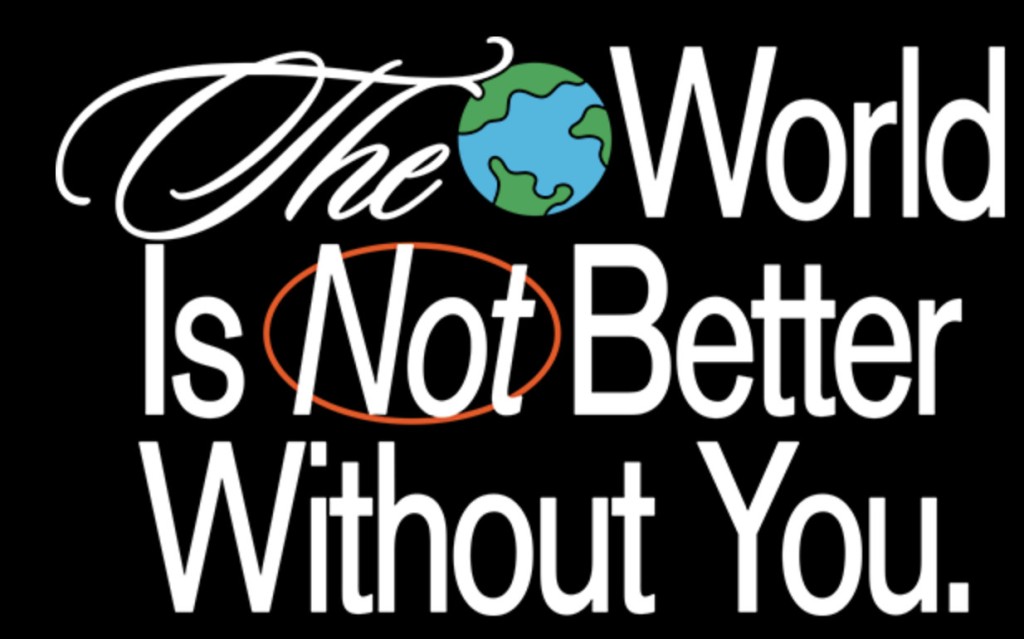This year it’s more essential than ever to raise awareness and funding for the suicide prevention movement. Over the past 15 years, the suicide rate among adolescents and young adults in the United States has increased by 57.4 percent, and millions more youth are struggling with depression and suicidal ideation. The collective trauma and loss of the past year and a half have nearly doubled the number of people having thoughts of suicide and experiencing depression compared to previous years, according to the CDC.
In response to these devastating statistics, Newport Healthcare is partnering for the seventh year in a row with To Write Love on Her Arms (TWLOHA), a nonprofit movement dedicated to presenting hope and finding help for people struggling with depression, addiction, self-injury, and suicide. Newport is the exclusive treatment provider for TWLOHA’s 2023 campaign to mark Suicide Prevention Awareness Month in September, which includes World Suicide Prevention Day (September 10) and National Suicide Prevention Week (September 10–16).
TWLOHA’s 2023 campaign theme is “The World Is Not Better Without You.” The organization raises funding to educate communities, provide hope and encouragement, and connect people to the help they deserve. Newport has partnered with TWLOHA since 2017, donating $10,000 each year to support the organization’s goal of preventing suicide in young people.
We are grateful for all that TWLOHA does to raise awareness, promote prevention, and erase the stigma of suicide. Remaining idle is not an option when so many are struggling with thoughts of self-harm and hopelessness. Newport is proud to play a part in helping people access much-needed treatment.
Joe Procopio, CEO, Newport Healthcare
The TWLOHA Story
The organization’s name comes from the title of a short story written by Jamie Tworkowski, TWLOHA’s founder. A teen girl named Renee Yohe, who self-harmed by cutting her arms, was the inspiration for the story and, ultimately, for the organization itself. When Jamie met Renee, she was 19, and struggling with substance abuse and depression. Subsequently, Jamie and his friends sold T-shirts to help pay for her treatment. It was a life-changing experience for Jamie, who went on to become a pivotal figure in the suicide prevention movement.
TWLOHA became an official nonprofit in 2007 and since then has donated over $2.6 million directly toward treatment. Its “Find Help” tool fields 3,500 searches monthly, made by people seeking affordable, local mental health resources. As well as fundraising, TWLOHA offers ways for people to get involved online, in their communities, and/or professionally.

Newport Healthcare and TWLOHA Are Partnering to Prevent Youth Suicide
Help teens and young adults get the help they need in crisis by donating to To Write Love On Her Arms today.
10 Teen Suicide Statistics
- In the past 10 years, suicide rates among young people ages 10–17 have increased by more than 70 percent.
- Close to one-third of teen girls shave seriously considered attempting suicide.
- CDC research found that emergency room visits for suspected suicide attempts among girls aged 12–17 increased by 50 percent during the past winter.
- 20 percent of high school students have seriously considered suicide, according to statistics from the National Alliance on Mental Illness (NAMI), and 9 percent have made suicide attempts.
- Every day in the United States, there are more than 3,000 suicide attempts by high school students, according to the Jason Foundation.
- Half of LGBTQ teens considered suicide in the past year, and 18 percent made a suicide attempt.
- 15 percent of US adolescents have had a major depressive episode in the past year, and 10 percent have severe major depression, according to Mental Health America.
- The number of teens admitted to children’s hospitals as a result of suicidal thoughts or self-harm has more than doubled during the last decade.
- More than half of teens who try to commit suicide have never been given a mental health diagnosis.
- The United States faces a severe shortage of practicing child and adolescent psychiatrists, with over 85 percent of doctor’s offices reporting difficulty locating mental healthcare providers for their patients under 18.
10 Young Adult Suicide Statistics
- 15 percent of college students have seriously considered suicide.
- A 2019 study published in the Journal of the American Medical Association found that the suicide rate for ages 20–24 has reached its highest point since 2000.
- According to the JED Foundation, 10 percent of college students seriously consider attempting suicide, and 1,100 college students die by suicide each year.
- 2021 data from Mental Health America (MHA) shows that the more than 11.4 million adults are experiencing serious suicidal thoughts—an increase of some 664,000 people as compared to 2021 data.
- Research shows a 71 percent increase in serious psychological distress among young adults over the past two decades.
- 130 US residents die by suicide each day.
- There are 1.4 million suicide attempts made each year.
- For American Indian and Alaska Native youth, the rate of suicide is 2.5 times higher than that of their peers.
- 37 percent of LGBTQ young adults considered suicide in the past year, and 10 percent made a suicide attempt.
- MHA’s 2022 report found that 56 percent of adults with a mental illness do not receive any mental health treatment at all.
10 Warning Signs of Suicide in Young People
There are ways to recognize whether someone is considering a suicide attempt. Here are some of the warning signs that parents, teachers, school psychologists, and peers should be able to identify:
- Talking or posting on social media about suicide or wanting to die
- Expressing feels of being hopeless or trapped
- Increasing use of drugs and/or alcohol
- Changes in weight, appearance, or sleep habits
- Gathering drugs, sharp objects, firearms, or other items that could be used to inflict self-harm
- Isolating themselves and withdrawing from friends
- Searching online for methods of committing suicide
- Visiting or calling people to say goodbye, and giving away prized possessions
- Risk-taking or self-destructive behavior
- Suddenly becoming calm or cheerful after a long period of depression
If you see any of these signs, take the following actions:
- Do not leave the person alone.
- Remove anything that could be used in a suicide attempt, including firearms, alcohol, drugs, razors, or other sharp objects.
- Call the National Suicide Prevention Lifeline at 988.
- Take the person to an emergency room or seek help from a medical or mental health professional.
Source: American Foundation for Suicide Prevention
How We Can Prevent Suicide in Young People
Along with family and community support, the most important suicide prevention resource for teens and young adults is access to treatment for mental health and co-occurring disorders. The most effective treatment approaches utilize an evidence-based clinical model of care that focuses on healing the trauma at the root of depression, anxiety, suicidal ideation, and other mental health issues. In addition, young people gain skills in problem solving and conflict resolution, develop healthy coping mechanisms, and build executive functioning, resilience, and emotional self-regulation.
Contact our Admissions experts to learn more about how Newport Healthcare can serve as a resource for you, your family, or your clients. We are dedicated to doing our part in the suicide prevention movement by providing the highest-quality care for teens and young adults—so young people can have more and better days to spend with those they love.
